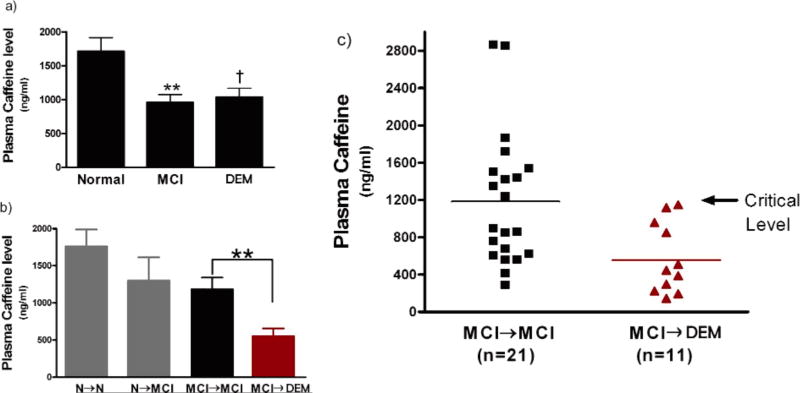Fig. 1.
Plasma caffeine levels at the beginning of a 2–4 year cognitive assessment period in subjects from two combined cohorts (Miami and Tampa). a) Caffeine levels in subjects grouped by their initial cognitive status as Normal (N), mild cognitive impairment (MCI), or dementia (DEM). Lower caffeine levels were present in MCI and DEM subjects at study initiation. **p < 0.02 versus N; †p = 0.07 versus N. b) Caffeine levels in subjects grouped by their eventual cognitive status during follow-up as stable Normal (N→N), Normal converting to MCI (N→MCI), stable MCI (MCI→MCI), or MCI converting to DEM (MCI→DEM). Blood plasma caffeine levels at study initiation were substantially lower in MCI patients who eventually progressed to DEM compared to those that remained stable MCI. **p < 0.02. c) Plotting of caffeine levels in individual MCI subjects who progressed to DEM and those that remained stable MCI (group means indicated by horizontal lines). None of the MCI→DEM subjects had initial caffeine levels above a critical level of 1200 ng/ml, while half of stable MCI subjects had levels higher than that level. Thus, subjects with the initial diagnosis of MCI and who possessed plasma caffeine levels above 1200 ng/ml at that time had a 100% chance of avoiding DEM during the ensuing 2–4 years.

